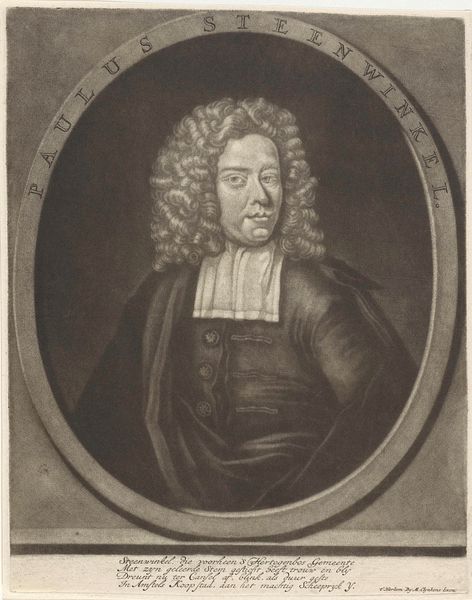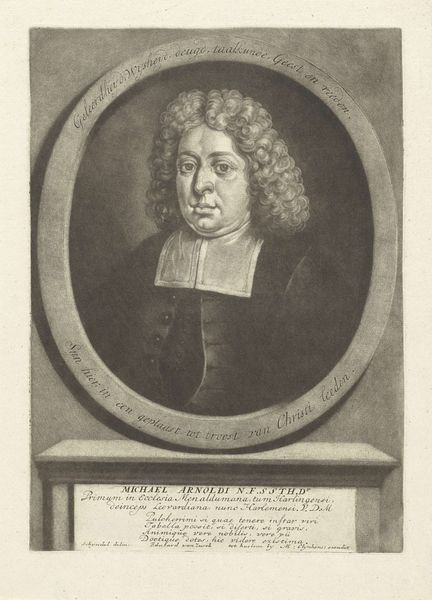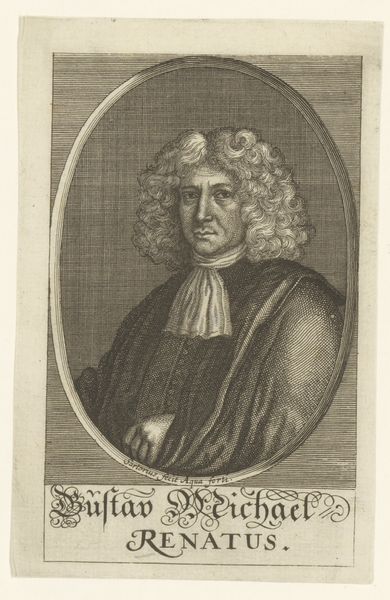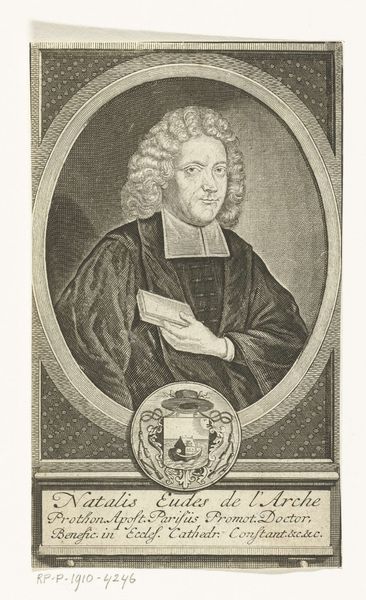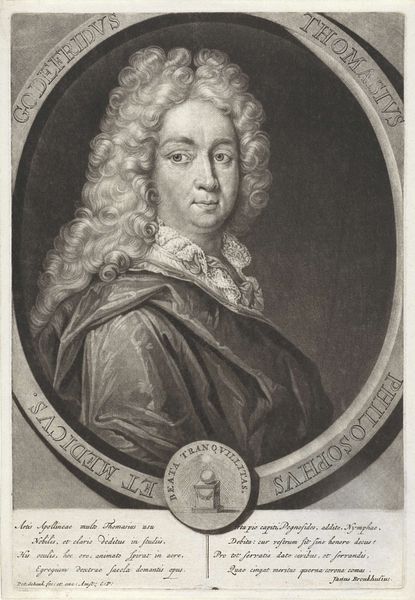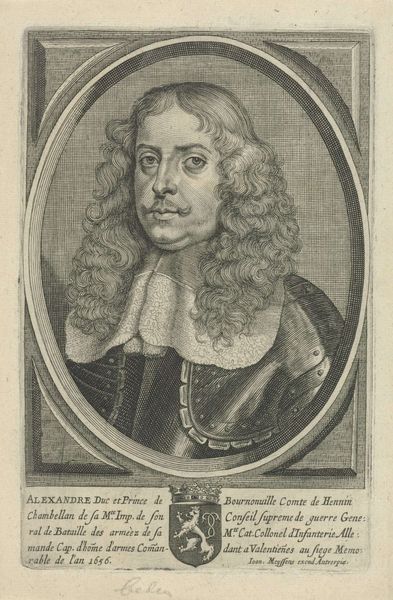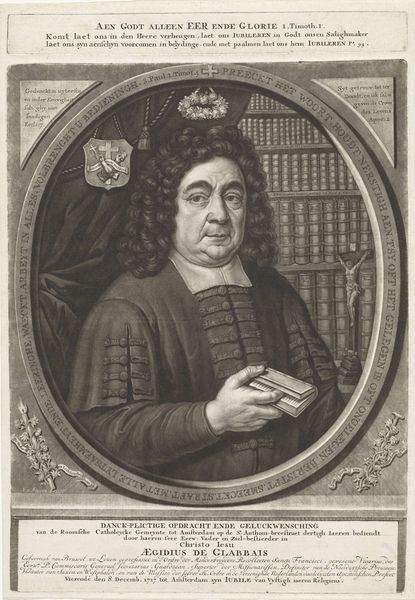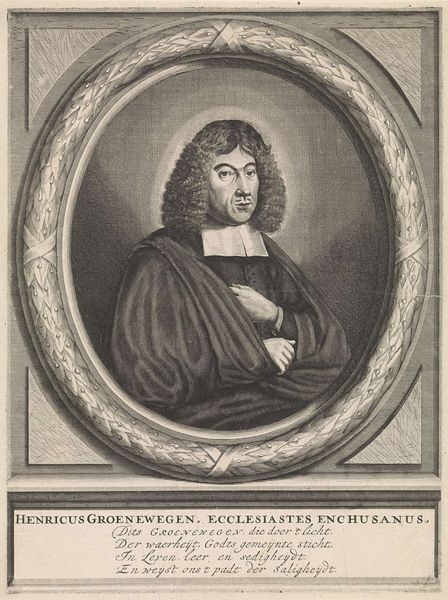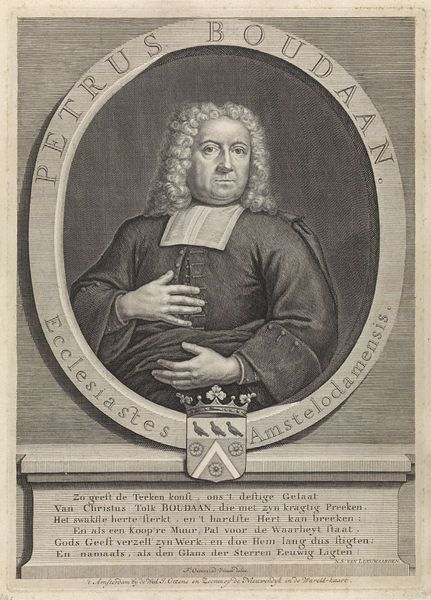
print, engraving
#
portrait
#
baroque
#
dutch-golden-age
# print
#
book
#
archive photography
#
historical photography
#
engraving
Dimensions: height 288 mm, width 210 mm
Copyright: Rijks Museum: Open Domain
Curator: Pieter Schenk brings us “Portrait of the Theologian and Writer Joannes Brandt,” likely crafted between 1670 and 1713. It resides here at the Rijksmuseum. Editor: It strikes me as instantly serene. The oval composition containing this man with his soft, almost dreamy expression, suggests an intellectual containment, or perhaps reflection. The grayscale emphasizes the textural qualities of the engraving technique beautifully. Curator: Yes, it's rich in those qualities inherent to the period. The swirling baroque flourishes in Brandt’s hair mimic, and are balanced by the strong, if curving, architecture of the text surrounding the central image of the figure, imbuing him with an authority rooted in intellectual pursuits. Editor: It also subtly reflects on the historical function of portraiture itself. By containing him within an oval, almost egg-like, form—there's a sense of posterity or even a pre-birth suggestion, making him timeless, forever captured in his moment. Curator: And we should note Brandt himself: as a Remonstrant minister, he represented a theological current advocating for freedom of will against strict Calvinist predestination. The portrait becomes a symbol of intellectual and spiritual independence. The text beneath references how a soul is moved through the beauty of his teachings, offering solace. Editor: That inscription… it’s almost an incantation, furthering this sense of the subject existing not just as a man but an embodiment of ideas, almost iconic. But if you strip away the inscription and focus only on the lines that give shape to the face and fabric, then you witness this almost scientific recording of visual textures that prefigures so much modern aesthetic thinking. Curator: The symbolic layering definitely provides context, understanding him as a product and symbol of his time. It emphasizes the role such figures played within shaping culture and societal progress, especially theological openness. Editor: And for me, the strength and legacy reside in the exquisite deployment of contrasts in the engraving – its sheer visual qualities that draw our gaze over centuries, reminding us about its materiality first. Curator: Absolutely, it stands as a testament to the power of visual symbolism in carrying forward meaningful discourse through history. Editor: Indeed. The intertwining of form and idea gives us something deeply memorable.
Comments
No comments
Be the first to comment and join the conversation on the ultimate creative platform.
